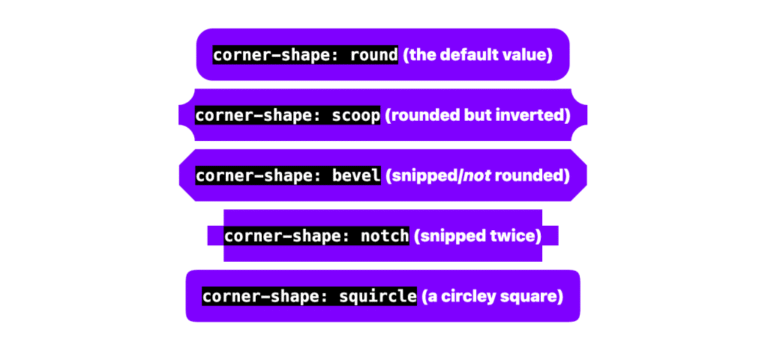
As the world becomes increasingly data-driven, businesses and organizations constantly look for ways to optimize their strategies and improve their performance.
AB testing is a powerful tool in their arsenal, which allows them to test different product or service versions to see which performs better. In this brief guide to AB testing, we’ll explore the basics of this powerful technique and how it can drive better results and outcomes for your business.
What Is A/B Testing and When To Use It?
A/B testing, or split testing, is a technique used to compare two versions of a product or service to determine which one performs better. This is done by dividing your audience into two clusters and showing each group a different version of the product or service. You can then measure which version leads to better results, such as higher engagement, more conversions, or increased revenue.
A/B testing is particularly useful when you want to make data-driven decisions and optimize your strategies. For example, if you’re launching a new website, you might want to test different designs, layouts, or copies to see which version leads to higher engagement and conversions. Or, if you’re running a marketing campaign, you might want to test different messaging, offers, or calls to action to see which generates more leads or sales.
Choice Of Primary/Success Metric
The choice of primary/success metric is a critical consideration in A/B testing, as it determines the criteria by which you’ll evaluate the success or failure of the test.
It Should Be Connected to Your Business Goal
The primary/success metric should be tied directly to the business goal or objective you’re trying to achieve with the test. For example, if your goal is to increase revenue, your primary/success metric might be total sales or revenue per user. If your goal is to increase user engagement, your primary/success metric might be time spent on site or the number of page views per session.
Meaningful and Measurable
It’s important to choose a primary/success metric that is both meaningful and measurable. This means that the metric should be tied to a specific business outcome and that you should be able to collect and analyze data on that metric reliably and accurately.
Consider the Secondary Metrics
In addition, it’s important to consider secondary metrics as well. While the primary/success metric should be the main criterion for evaluating the test, secondary metrics can provide additional insights and help identify potential improvement areas.
The Hypothesis of the Test
A hypothesis is a statement that defines what you expect to achieve through an A/B test. It’s essentially an educated guess that you make based on data, research, or experience. The hypothesis should be based on a specific problem or opportunity that you’ve identified, and it should propose a solution that you believe will address that problem or opportunity.
For example, let’s say you’re running an e-commerce website and notice that the checkout page has a high abandonment rate. Your hypothesis might be: “If we simplify the checkout process by removing unnecessary fields and reducing the number of steps, we will increase the checkout completion rate and reduce cart abandonment.”
The hypothesis should be specific, measurable, and tied directly to the primary/success metric you chose for the test. This will enable you to determine whether the test was successful or not based on whether the hypothesis was proven or disproven.
Design of the Test (Power Analysis)
The design of an A/B test involves several key components, including sample size calculation or power analysis, which helps to determine the minimum sample size required to detect a statistically significant difference between the two variations.
Power analysis is important because it ensures you have enough data to confidently detect a meaningful difference between the variations while minimizing the risk of false positives or negatives.
To conduct a power analysis, you’ll need to consider several factors, including:
- The expected effect size (the size of the difference you expect to see between the variations).
- The level of statistical significance you want to achieve (typically 95% or 99%).
- The statistical power you want to achieve (typically 80% or higher).
Using this information, you can calculate the minimum sample size required to achieve the desired level of statistical power.
In addition to power analysis, the design of the A/B test should also include considerations such as randomization (ensuring that users are randomly assigned to each variation), control variables (keeping all other variables constant except for the one being tested), and statistical analysis (using appropriate statistical methods to analyze the results and determine statistical significance).
Calculation of Sample Size, Test Duration
Calculating the appropriate sample size and test duration for an A/B test is important in ensuring that the results are accurate and meaningful. Here are some general guidelines and methods for calculating sample size and test duration:
Sample Size Calculation
The sample size for an A/B test depends on several factors, including the desired level of statistical significance, statistical power, and the expected effect size.
A simple implementation in Python to calculate sample size for standard assumptions ( power = 80%, statistical significance = 95%, and effect size = 0.5 ) is as follows:
import scipy.stats
import statsmodels.stats.power as smp
import matplotlib.pyplot as plt power_analysis = smp.TTestIndPower()
sample_size = power_analysis.solve_power(effect_size=0.5, power=0.8, alpha=0.05)
print(sample_size)Test Duration Calculation
The test duration is determined by the number of visitors or users needed to reach the desired sample size. This can be calculated based on the website or app’s historical traffic data or estimated using industry benchmarks.
Once you have the estimated number of visitors or users needed, you can calculate the test duration based on the website or app’s average daily traffic or usage.
Balancing Sample Size and Test Duration
It’s important to balance sample size and test duration, as increasing the sample size will typically increase the test duration and vice versa. It’s also important to ensure that the test runs for a sufficient amount of time to capture any potential seasonal or day-of-week effects.
Statistical Tests (T-Test, Z-Test, Chi-Squared Test)
When conducting A/B testing, statistical tests determine whether the observed differences between the two variations are statistically significant or simply due to chance. Here are some commonly used statistical tests in A/B testing:
T-test
A t-test is a statistical test that compares the means of two samples to determine whether they differ significantly. It is commonly used when the sample size is small (less than 30) and the population standard deviation is unknown.
Python implementation of 2 sample T-tests using SciPy is as follows:
from scipy import stats # Sample data for Group 1
group1_data = np.array([10, 12, 14, 15, 16]) # Sample data for Group 2
group2_data = np.array([18, 20, 22, 24, 26]) # Perform the two-sample t-test
t_stat, p_value = stats.ttest_ind(group1_data, group2_data) # Print the results
print("T-statistic:", t_stat)
print("P-value:", p_value) # Check for significance at a certain alpha level (e.g., 0.05)
alpha = 0.05
if p_value
import numpy as np
from scipy import stats # Sample data for Group 1
group1_data = np.array([10, 12, 14, 15, 16]) # Sample data for Group 2
group2_data = np.array([18, 20, 22, 24, 26]) # Perform the two-sample t-test
t_stat, p_value = stats.ttest_ind(group1_data, group2_data) # Print the results
print("T-statistic:", t_stat)
print("P-value:", p_value) # Check for significance at a certain alpha level (e.g., 0.05)
alpha = 0.05
if p_value < alpha: print("The difference between the two groups is statistically significant.")
else: print("There is no statistically significant difference between the two groups.")
Z-Test
A z-test is a statistical test that compares the means of two samples to determine whether they differ significantly. It is commonly used when the sample size is large (greater than 30) and the population standard deviation is known.
Python implementation of two sample Z tests is as follows:
import statsmodels.api as sm
from statsmodels.stats.weightstats import ztest # Sample data for Group 1
group1_data = np.array([10, 12, 14, 15, 16]) # Sample data for Group 2
group2_data = np.array([18, 20, 22, 24, 26]) # Perform the two-sample Z-test using statsmodels
z_stat, p_value = ztest(group1_data, group2_data, value=0, alternative='two-sided') # Print the results
print("Z-statistic:", z_stat)
print("P-value:", p_value) # Check for significance at a certain alpha level (e.g., 0.05)
alpha = 0.05
if p_value
import numpy as np
import statsmodels.api as sm
from statsmodels.stats.weightstats import ztest # Sample data for Group 1
group1_data = np.array([10, 12, 14, 15, 16]) # Sample data for Group 2
group2_data = np.array([18, 20, 22, 24, 26]) # Perform the two-sample Z-test using statsmodels
z_stat, p_value = ztest(group1_data, group2_data, value=0, alternative='two-sided') # Print the results
print("Z-statistic:", z_stat)
print("P-value:", p_value) # Check for significance at a certain alpha level (e.g., 0.05)
alpha = 0.05
if p_value < alpha: print("The difference between the two groups is statistically significant.")
else: print("There is no statistically significant difference between the two groups.")

